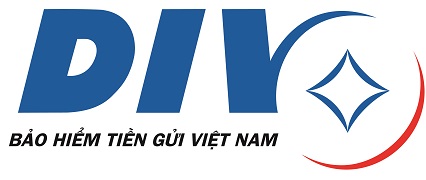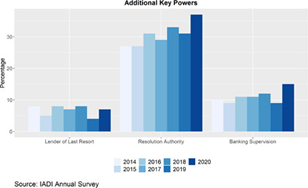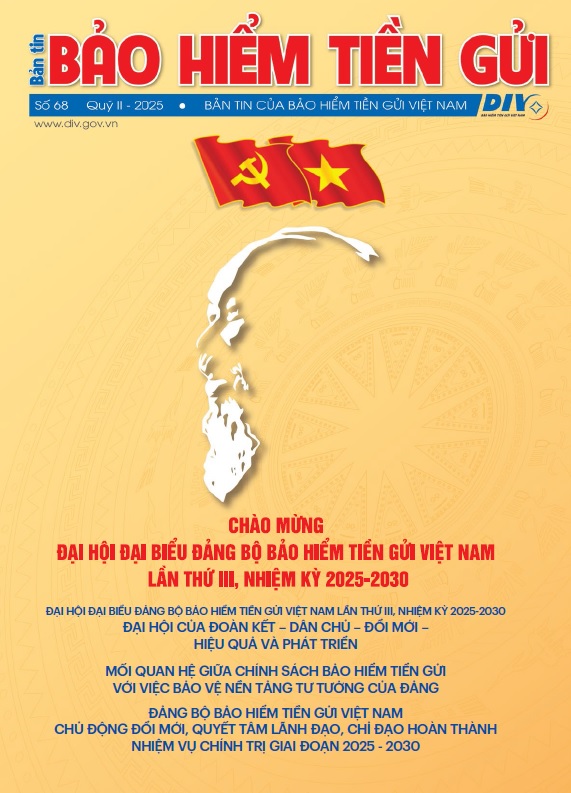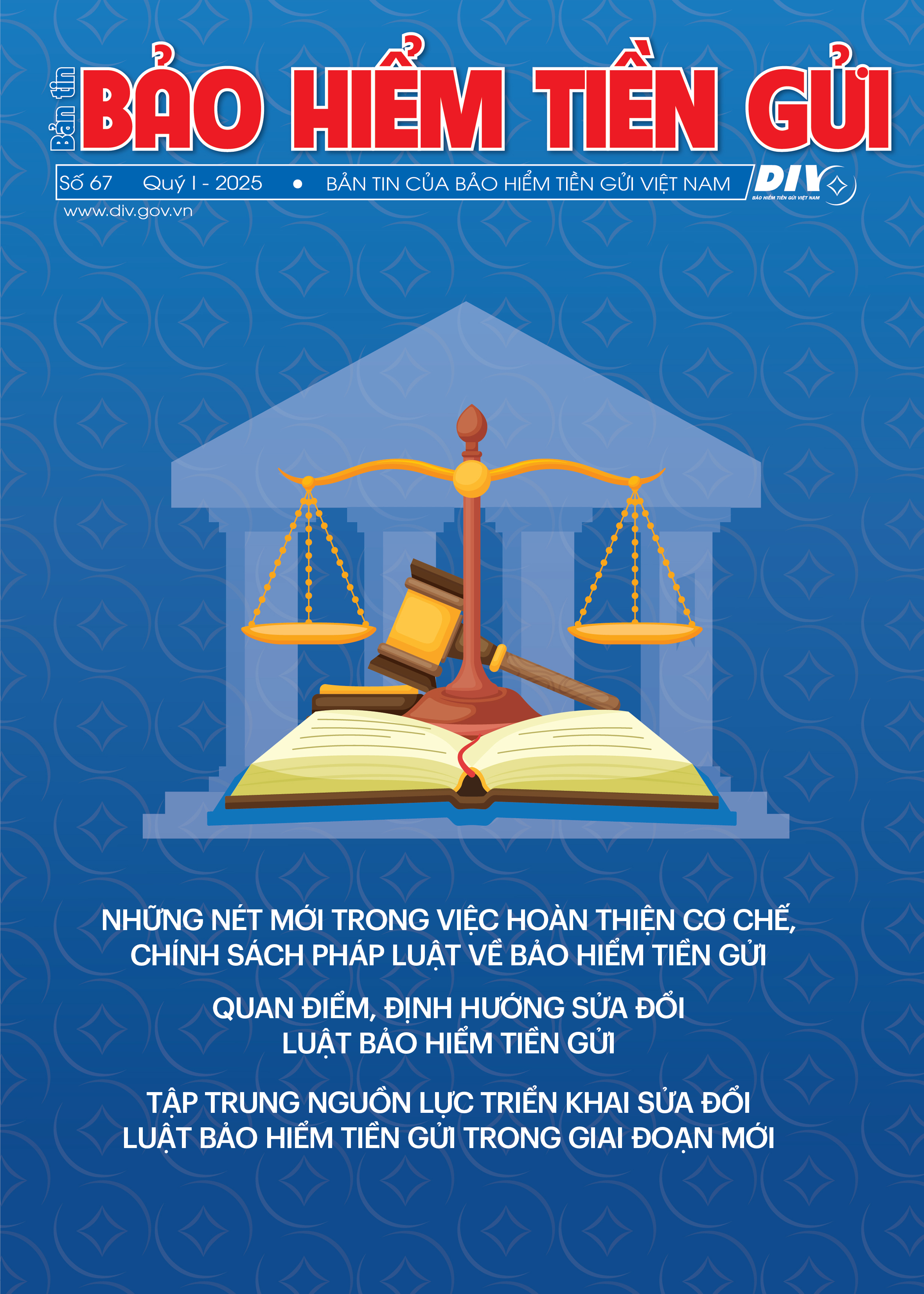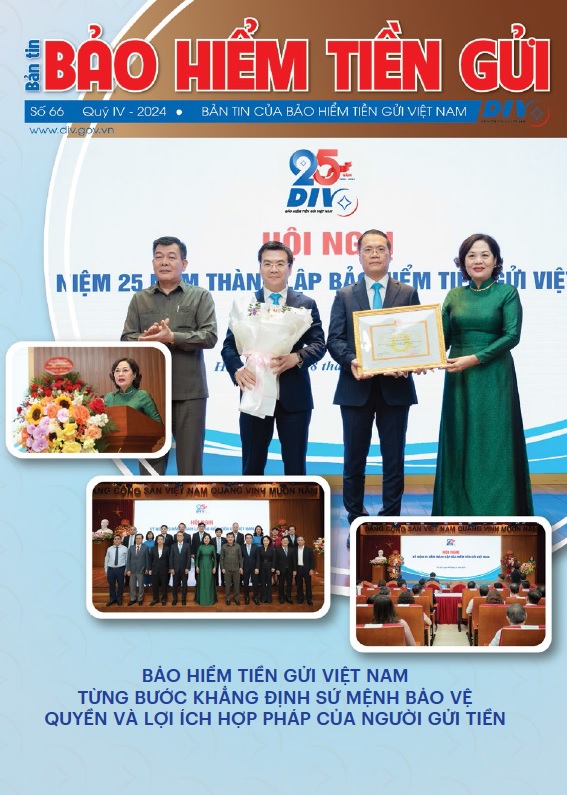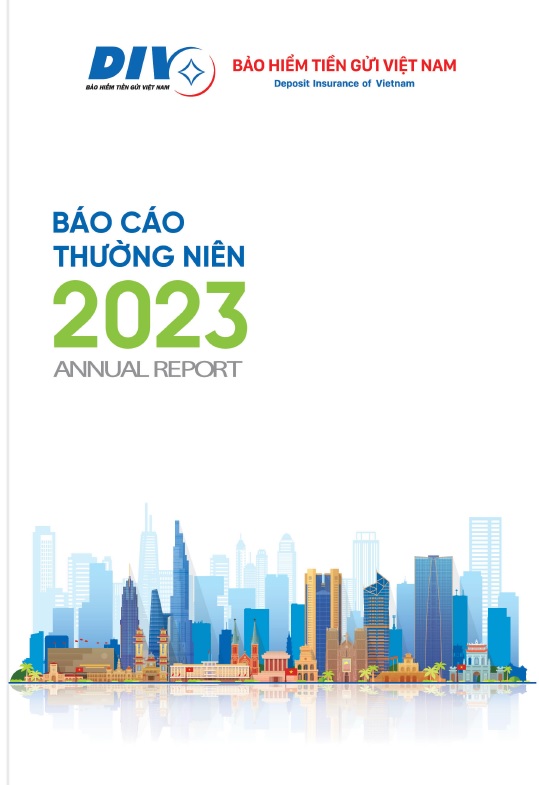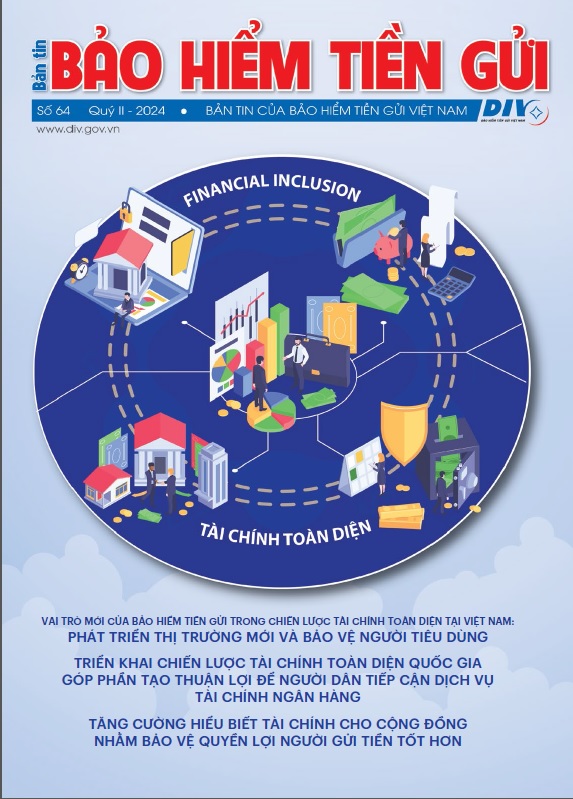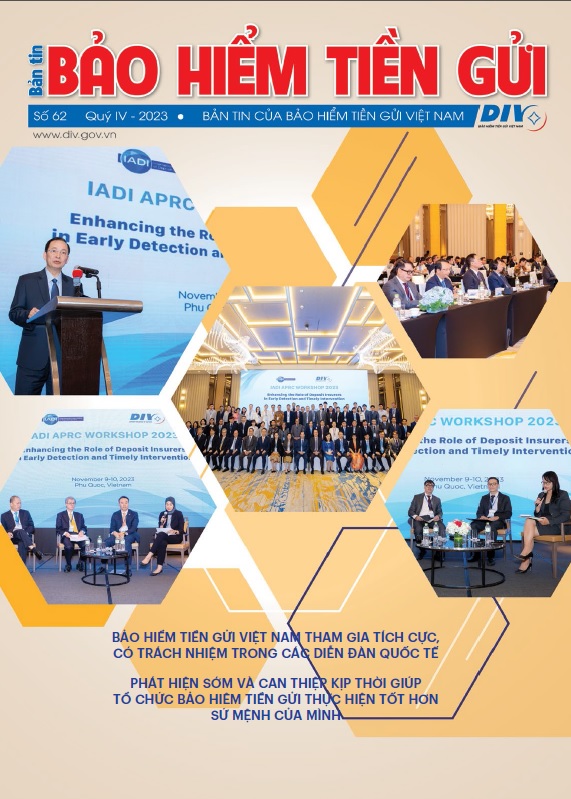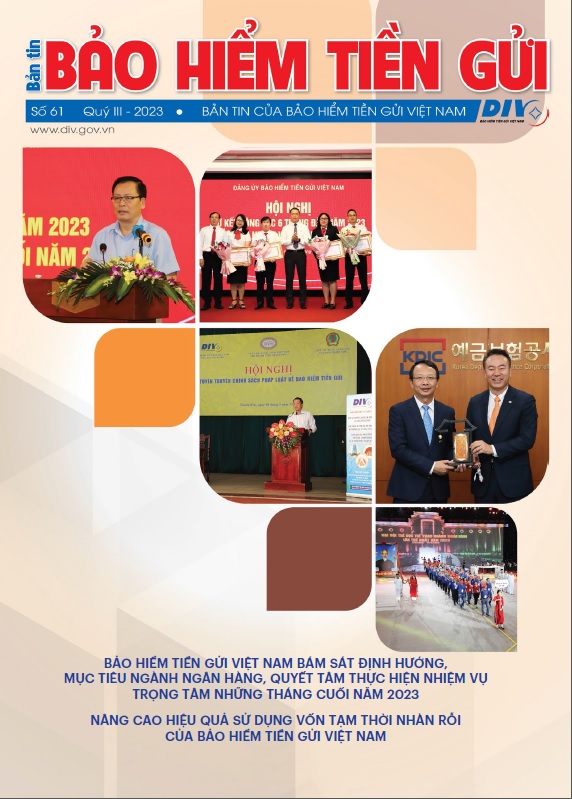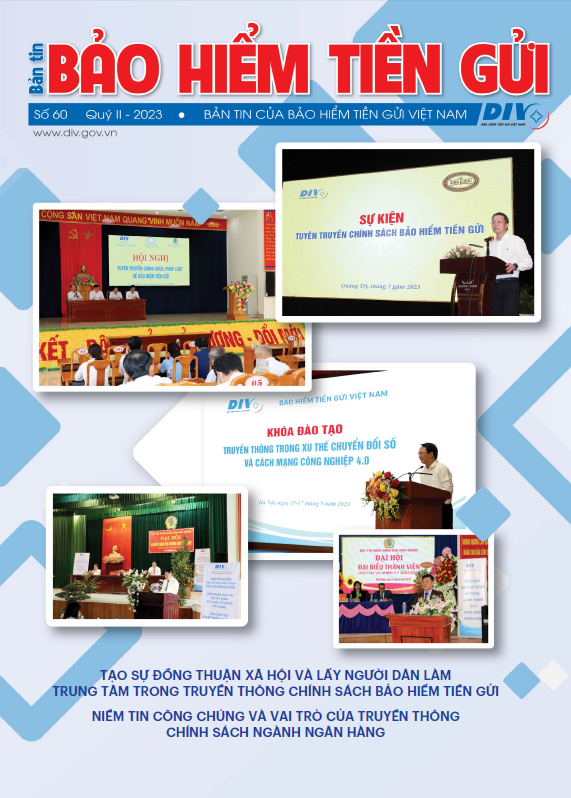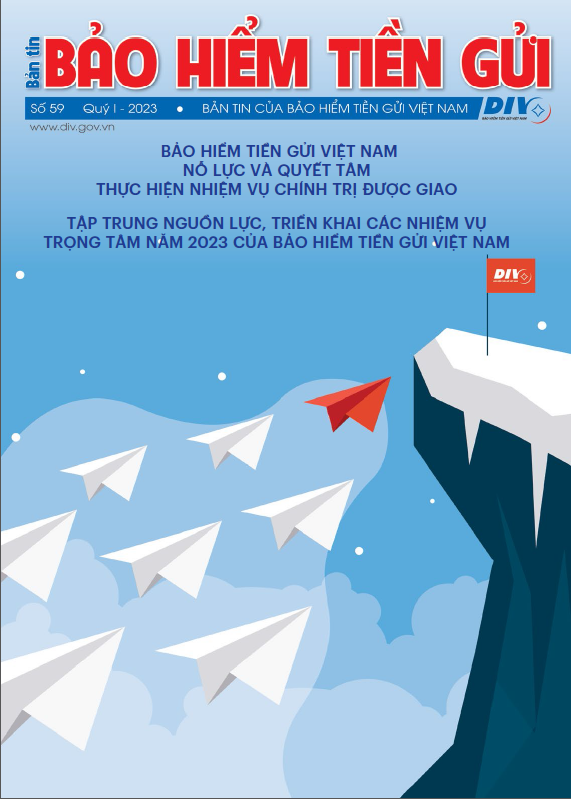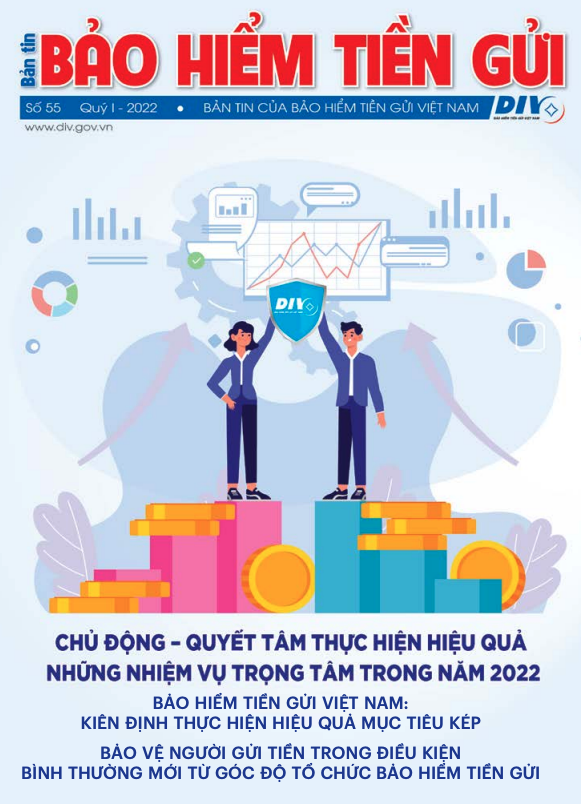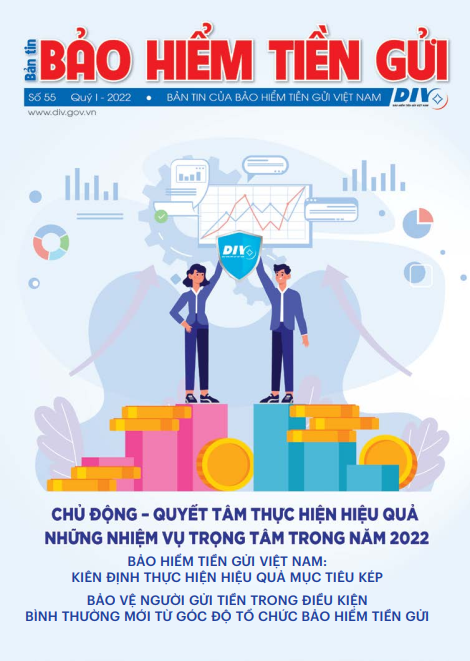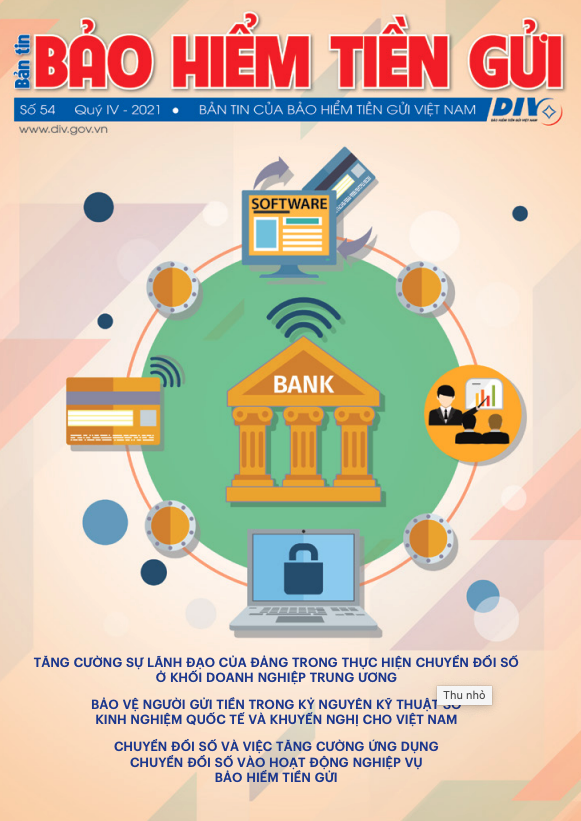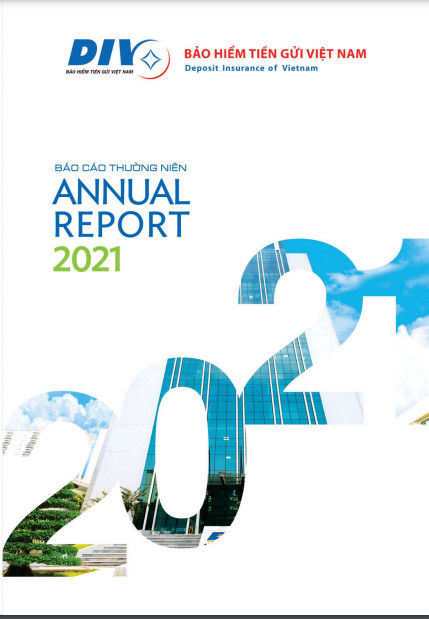Through its professional activities, DIV has been continuously supporting the State Bank of Vietnam (SBV) in supervising and examining the "health" of credit institutions in general and insured institutions, promptly resolving weak units, and protecting the interests of depositors. Currently, the DIV is protecting over 123 million depositors at 1,277 insured institutions, with a capital of over VND 126 trillion and a reserve fund of nearly VND 120 trillion - figures that show the indispensable role of the DIV in stabilizing the financial system. The National Credit Information Center of Vietnam (CIC) is a unit under the SBV, acting as a national focal point for collecting, storing, analyzing and providing credit information of credit institutions, foreign bank branches and related organizations as well as credit history information of individuals nationwide to serve the state management work in the monetary and banking sector and support credit institutions in assessing credit risks and controlling credit quality. ... It can be said that the CIC is an important credit information channel that helps prevent and limit bad debts, contributing to ensuring the safety of banking operations. Currently, CIC is managing a huge database of more than 55.3 million customer records.
In addition, both DIV and CIC are the main participants and beneficiaries of the "Financial Sector Modernisation and Information Management System " Project (FSMIMS) funded by the World Bank (WB) with the participation of the SBV, DIV, and CIC. This project focuses on improving banking supervision capacity, improving the credit information system, and enhancing risk management capacity in the financial system. In which the roles of the two units are very specific:
(i) DIV: Improving risk monitoring capacity, enhancing the ability to assess the financial health of insured institutions.
(ii) CIC: Developing a modern credit information system, supporting management agencies and credit institutions in assessing risks and making credit decisions.
Thus, DIV and CIC are both important financial institutions in the national financial safety system. Although they have specific functions and tasks, such as DIV focusing on protecting depositors and supervising the safety of insured institutions, while CIC focuses on credit information to control credit risks, both units share the same ultimate goal of protecting the stability of the financial and banking system. Close coordination between DIV - the agency protecting depositors, and CIC - the focal point for credit information, will be essential to improve the effectiveness of the DIV policy as well as contribute to ensuring the safety of the banking system. The connection of information between these two organizations will create a synergistic strength to better promote the role of each party in preventing risks and ensuring the safety of the system. International experience also shows that an effective deposit insurance system requires formal information coordination regulations with agencies in the financial safety net. The International Association of Deposit Insurers (IADI) has recommended that, to protect depositors and ensure financial stability, a comprehensive and formal framework for the coordination of activities and information sharing between the deposit insurance organization and other members of the financial safety net is needed.
Furthermore, one of the five key tasks of the DIV in 2025 is to promote information exchange between the DIV and the SBV branches and CIC, and to review and update the coordination regulations in accordance with actual conditions. To realize the above coordination mechanism, on January 3, 2025, at the Conference on implementing the tasks of 2025 of the DIV, under the witness of the Deputy Governor of the SBV, the DIV and CIC signed an Agreement on providing information and data to support the implementation of deposit insurance activities. This is considered an important milestone, demonstrating a new step forward in the cooperative relationship between the two agencies for the common goal of ensuring the safety and stability of the banking system.
According to the content of the agreement, CIC plays the role of the information provider, and the DIV is the recipient, aiming to share credit information to help the DIV effectively perform its deposit insurance tasks in accordance with the law, thereby better protecting the rights of depositors and maintaining the stability of the credit institution system.
The initial scope of cooperation focuses on units under special control. CIC will provide DIV with credit information about these organizations according to information forms agreed upon by both parties (including four forms required by DIV and two available CIC forms) and comply with current legal regulations on information security.
Regarding the connection method, the information and data provided by CIC to DIV will be transmitted through the SBV's intermediate database (DB Gateway) established at the Information Technology Department- SBV and through the existing network connection infrastructure of the Information Technology Department. This is a shared data connection system in the banking industry, ensuring security and transparency when sharing information between units under the SBV.
It is expected that after the two sides complete the information exploitation report forms, from the second quarter of 2025, CIC will begin to provide official data to DIV through this connection system.
It can be said that sharing and exploiting credit information is of great significance to DIV in the coming time:
Effectively implementing the Law on Deposit Insurance and the Law on Credit Institutions 2024: helping DIV perform well the deposit insurance function of risk prevention, making lending plans, and reimbursement plans, not just stopping at reimbursement when a bank fails. In addition, data from CIC can help assess the probability of failure of each credit institution, thereby proposing appropriate deposit insurance premiums. At the same time, having more credit data helps DIV optimize the insurance payment process when a bank fails or promptly respond to payment events.
Implementing the FSMIMS Project: Sharing data between DIV and CIC enhances the FSMIMS project's effectiveness in modernizing the financial supervisory system, thereby improving the quality of supervisory data. DIV can use information from CIC to assess the financial capacity of participating institutions more accurately. At the same time, CIC can support DIV in building risk assessment models based on historical credit data.
Contributing to improving the efficiency of the banking system:
The coordination between DIV and CIC not only helps protect depositors but also promotes the stability and sustainable development of the banking system. Support credit institutions, in general, and participating institutions in DIV, in particular, in better managing risks through the supervision of results and the early warning of risks recommended to the SBV. Create a more transparent financial environment by sharing information and data, enabling management agencies to gain a more comprehensive view of the banking system's financial health.
To maximize the effectiveness of the coordination between DIV and CIC, in the coming time, DIV can consider the following contents:
Perfecting the legal framework and coordination regulations: On the basis of the signed agreement, the two sides should continue to review relevant legal documents (Law on Deposit Insurance, regulations on credit information, etc.) to propose to supplement and amend the information to be provided, shared if necessary, creating an open and effective legal corridor for data sharing between DIV and CIC. At the same time, it is possible to propose organizing regular meetings (e.g., quarterly) between the leaders and technical departments of the two sides to evaluate the results of coordination, share outstanding information, and agree on resolving measures for problematic organizations. The regular exchange mechanism helps ensure continuous and effective coordination, promptly removing technical or procedural obstacles.
Developing analysis and early warning tools: It is possible to propose cooperation in building data analysis and risk warning systems using shared data, such as developing a risk scoring model for insured institutions based on both the supervising data of the DIV and credit data from the CIC. This early warning system will automatically analyze indicators (bad debt ratio, credit balance, deposit withdrawal trends, etc.) and warn if an organization shows signs of deterioration. Jointly developing tools not only takes advantage of each party's data strengths but also creates consistency in risk assessment.
The coordination between the DIV and the CIC in sharing and exploiting credit information is an inevitable requirement to improve the effectiveness of deposit insurer operations in the context of an increasingly developing banking system with complex risks. Sharing information clearly and analyzing effectively will help DIV improve its supervising capacity, play a more active role in preventing and planning to respond to banking risks, instead of just intervening after an incident has occurred. On the contrary, CIC also affirms its role not only in supporting credit institutions but also in directly contributing to the goal of protecting depositors and stabilizing the financial system.
The signing of the cooperation agreement in early 2025 is just the beginning of the cooperation process between the two units. In the coming time, with determination, efforts, and the right direction, DIV and CIC will increasingly connect, making an important contribution to better protecting the rights of depositors, enhancing public confidence, and maintaining the stability and soundness of the Vietnamese financial and banking system.
Communication Department (Translation)
